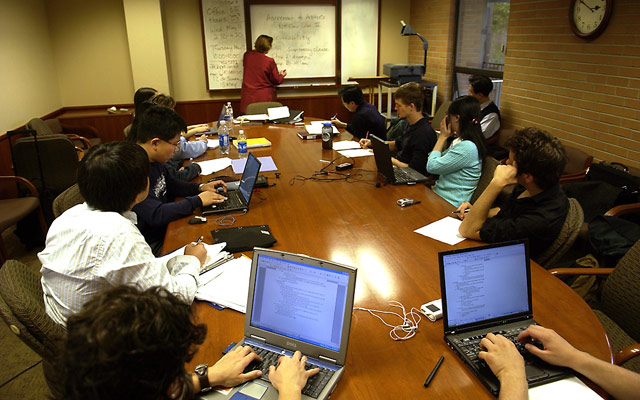 |
| A small classroom, an important solution |
Education today, as outlined in the previous posts, is inefficient. Many students are not being taught as they should be, whether the material be too complex or not challenging. Class sizes in many schools are far above the numbers they should be, which forces students to be herded into large, broad groups instead of being taught in smaller, more need-specific classes. Dr. F. A. Fan writes in the journal Research in Education, in his article Class Size: Effects on Students' Academic Achievements and Some Remedial Measures found here that "For first through to seventh grades, using student–teacher ratio as a measure of class size, Ferguson found that district student achievement fell as the student–teacher ratio increased for every student above an eighteen to one (18 : 1) ratio." It's a simple inverse relationship; as class size increases, the quality of teaching decreases. This leads to an obvious conclusion, which is that the size of classes must be diminished. This is, of course, not immediately possible, due to many constraints which reach beyond the realm of education, such as economics and sociology. As such, an important solution to the problem of education would be to reduce class sizes, which involves getting more money into the education system, and placing more cultural importance on individualization education.
Building on this idea, it is also important to redefine the importance of education for all people. In many cultures, it is still the norm for women to and the poor to not receive a good education, assuming they would receive one at all. It is imperative that everyone be offered good educational opportunities, otherwise many potentially great minds will be squashed, as intelligence knows no social boundaries. And furthermore, those who are given the right to education will be taught to restrict education to other, which will only perpetuate the problems that are currently faced. These are only some solutions; more ideas will be discussed in the next feture.
No comments:
Post a Comment